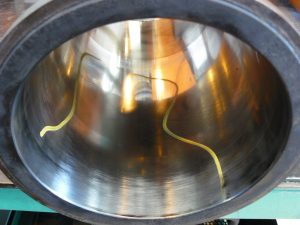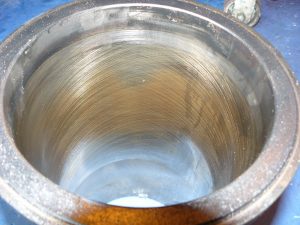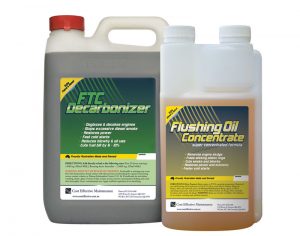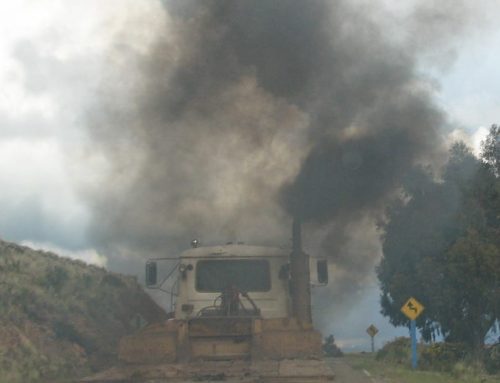What is engine blowby
There’s a big window of opportunity on how to fix engine blowby problems, before serious engine wear occurs. Most drivers can easily tell when thing aren’t quite right, for example:
Engines suffering with Blowby usally show signs of:
- Engine is tired and down on power
- Engine is starting to breathe heavy with increased crank case fumes
- Increasing oil consumption
- Producing excess exhaust smoke
Engine blowby, smoke and oil use are related issues that, if ignored, can turn into very expensive repairs. Fortunately, in over 80% of cases this can be corrected at low cost, and without any downtime.
Typically, engine blowby is cylinder pressure leaking past the piston rings into the crankcase. Commonly, it starts as cylinder glazing or carbon forming in the top ring grooves, both of which allow cylinder leak down, and some oil burning. Oil burning produces further ring deposits, and more blowby. And of course, more internal engine stress.
Using an Engine Blowby Pack is the logical solution, because it directly addresses the root cause of blowby. It does this by enhancing combustion to burn off cylinder glaze and carbon (particularly from the top ring grooves).
What do I need to fix engine blowby?
Engine blowby can be reduced by following 2 steps:
Step 1. Simply add FTC Decarbonizer in with the diesel.
FTC will safely burn away all carbon from the combustion area, Deglaze cylinders, de-coke valves,turbos and DPF filters.
Step 2. Use Flushing Oil Concentrate when completing an oil change.
The flushing oil will dissolve all carbon and heavy oil sludge from the oil rings and all oil wetted areas
By cleanig up the carbon and freeing stuck oil rings the crankcase pressure should be greatly reduced assumeing excessive ring wear is not the casue of the Blowby.
To fix engine blow by, FTC Decarbonizer is added to the diesel at each fill, and you literally just drive the engine clean! The decarbonizing process is gentle and progressive, but efficient, even cleaning turbos and DPFs.
Most engines will also need cleaning from the oil side to restore full cleanliness to the lower piston rings as well. This involves running Flushing Oil Concentrate through the engine. It uses detergents to target hard, baked-on deposits and engine sludge, and according to the manufacturers, restores “as new clean” throughout.
The longer blowby is ignored, the more carbon accumulates in the engine. Black smoke increases, as does oil soot. Performance and fuel efficiency deteriorate. Excessive carbon on pistons can cause rapid wear. Most broken piston rings are the result of carbon accumulating in the ring grooves. By cleaning the engine up, and more importantly, keeping it clean, the risk of engine failure is greatly reduced.
Engine blowby can be reduced
The photos below are examples from Caterpillar D11R dozers operating in Queensland’s Bowen Basin a decade ago. Recommended rebuild life was about 11,000 hrs. There were many failures due to severe carbon build up, some with only 3000-4000 hrs. Typical rebuild intervals were 8,000-10,000 hrs. One 10-piece fleet using FTC Decarbonizer stood out! The first engine was stripped down at 15,000 hrs, and was found to be in excellent condition. After a while they settled on 18,000 hr rebuild intervals.

CAT 3508 Bad cylinder damage

CAT 3508 No carbon, FTC Decarbonizer used.
Increased exhaust soot fouls turbochargers, EGR valves and diesel particulate filters. Increased oil soot chews out turbo seals. Many catastrophic failures result from neglecting blowby.
By fixing engine blow by issues, engines operate with much reduced stress, more efficiently and much longer. The key to getting long life from Euro V emission controlled engines is burning the fuel clean for low exhaust soot, and maintaining low oil soot levels.
For more information on how to fix engine blowby, contact Cost Effective Maintenance





